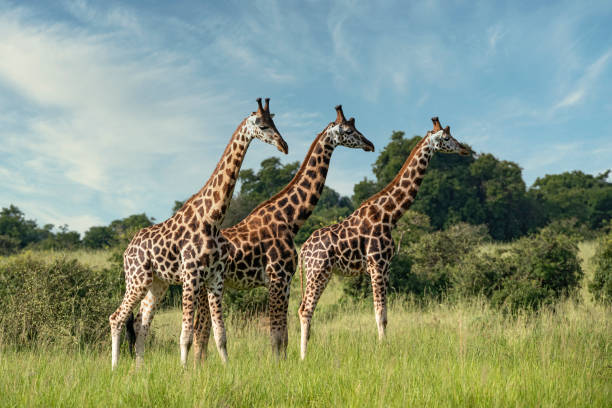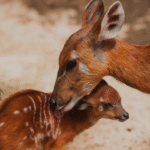
THROUGH MY EYES: THE MAGIC AND MAJESTY OF NORTHERN UGANDA
Northern Uganda remains one of the country’s most authentic and unspoiled regions, offering a perfect blend of wildlife conservation, rich cultural heritage, breathtaking landscapes, and thrilling adventure. Our journey began before sunrise in the bustling capital city of Kampala, our convoy of buses full of excitement, laughter, and anticipation.
What lay ahead was a multi-day adventure through some of Uganda’s most remarkable but lesser-known destinations.
“Where Silence Speaks: Tracing Uganda’s Road to Liberation
As we journeyed north from the bustling capital of Kampala, passing through the historically significant Luwero Triangle, the landscape gradually transformed, lush greenery giving way to open fields and quiet rural roads. Beneath this serene exterior, however, lies a region once burdened by the weight of a nation’s struggle.
The Luwero Triangle gained its name during one of Uganda’s most turbulent eras: the Ugandan Bush War (1981–1986). This was a brutal conflict between the government of Milton Obote and the National Resistance Army (NRA), led by Yoweri Museveni, who would later become Uganda’s long-standing president.
With its dense vegetation and remote villages, the area served as a strategic base for Museveni’s guerrilla fighters. But this resistance came at a devastating cost. Villagers suspected of supporting the rebels became targets of government crackdowns. What followed was a harrowing period marked by massacres, forced disappearances, and unmarked graves. Tens of thousands of innocent civilians, men, women, and children, were killed. Many were buried in mass graves, some of which are still being uncovered today.

To this day, the “Killing Fields of Luwero” evoke deep pain and reflection among Ugandans. Yet amid the sorrow and loss, the region emerged as a powerful symbol of resilience and liberation. From these very fields and forests, a new chapter in Uganda’s leadership was born. In 1986, after five years of relentless guerrilla warfare, the NRA captured Kampala, signaling the end of civil strife and the dawn of a new era.
Today, the Luwero Triangle is a quiet yet powerful testament to Uganda’s history. Farms stretch across once-bloodied soil, children laugh in schoolyards, and life continues. Yet, the past remains ever-present. Memorials and mass graves stand as solemn reminders of the price paid for peace.

Visiting the Luwero Triangle is not just a journey through space but through time. It is an opportunity to honor the fallen, to reflect on the cost of peace, and to admire the unbreakable spirit of a people who refused to be silenced. It remains both a living memory and a cautionary tale for generations to come.
Ziwa Rhino Sanctuary: Footsteps of Hope
Venturing further into Nakasongola District, we arrived by midday at the Ziwa Rhino Sanctuary, a glowing symbol of conservation and renewal. Founded in 2006 by Dr. George W. Frame, the sanctuary was created to reintroduce rhinos to Uganda after their extinction for over two decades.

Spread over 7,000 acres, Ziwa is now home to more than 40 Southern White Rhinos, descendants of the first arrivals from Kenya’s Solio Ranch. We joined experienced rangers for a walking safari, tracking rhinos through tall grasses and acacia woodlands. Coming face-to-face with these peaceful giants, grazing undisturbed just meters away, was a moment of deep reverence.
From Luwero’s haunted past to Ziwa’s thriving life, our journey painted a vivid picture of Uganda’s healing and progress, one step, one rhino at a time.

Karuma to Pakwach: Rivers, Stories, and Spirits
After lunch, we journeyed northward, crossing the mighty Karuma Falls, whose roaring Nile waters carved a striking silhouette beneath the bridge. By dusk, we arrived in Pakwach for a well-earned rest.
At sunrise, we explored Wang Lei, a sacred site steeped in Luo oral tradition. Here, we learned of Nyipir and Nabongo, sons of King Olum, whose quarrel over a royal spear and bead led to the separation of the Acholi and Alur tribes. Their tragic story, marked by loss, honor, and symbolism, ends at Wang Lei, where they buried an axe to signify their parting. Standing among sacred trees and traditional shrines, we listened as our guide wove ancestral tales that spoke of identity, resilience, and unity.

Ajai Wildlife Reserve: Where Nature Meets Culture
From Pakwach, we continued to Ajai Wildlife Reserve in Nebbi District, along the banks of the Albert Nile. Once a refuge for white rhinos, Ajai is now a growing hub for conservation and biodiversity, home to elephants, buffalo, crocodiles, and rich birdlife.

After a picnic under shady trees, Uganda Wildlife Authority rangers shared the reserve’s journey of ecotourism and community revival.

Later, we visited the Ajai community, who greeted us with vibrant dances, rhythmic drumming, and heartfelt songs. Elders shared their wisdom, and we joined in traditional dances, laughter echoing into the sunset, a cultural immersion we will never forget.
Chasing Waterfalls: The Magic of Oluko Falls
The next morning, we hiked to Oluko Falls, a serene man-made cascade on a private 16-acre property just outside Arua. Nestled among rock outcrops and lush vegetation, the falls are small but enchanting, especially during the wet seasons of March–May and September–November.

Slippery trails demanded sturdy hiking shoes, but the reward was pure magic: misty air, thunderous water, and the whispers of nature, a sanctuary far from the city noise.
Bethel Chapel: Faith on a Hilltop
From Arua, we ascended steep, muddy mountain roads into Nebbi District to reach Bethel Chapel, reputedly the world’s smallest church. Built in 1996 by a Korean missionary, the chapel accommodates only one pastor and two congregants.

The climb was treacherous to the extent that our bus nearly stalled, passengers clung to seats, and spontaneous prayers filled the air. But atop the hill, Faith stood quietly. This tiny chapel radiates simplicity, humility, and unwavering devotion. It was a spiritual highlight of our journey.
Murchison Falls National Park: Uganda’s Wild Heart
Next, we ventured into Murchison Falls National Park, Uganda’s largest and oldest conservation area, covering 3,893 square kilometers. At our campsite, we pitched tents under the stars, later gathering around a crackling fire to share songs, stories, and laughter.

At dawn, a three-hour game drive brought us up close with lions, giraffes, elephants, buffaloes, antelopes, and countless bird species, all thriving across savannahs, woodlands, swamps, and wetlands. After breakfast and lunch, we boarded a Nile boat cruise, spotting hippos, bathing elephants, sunbathing crocodiles, and birds in flight.
As we approached Murchison Falls, the air vibrated with its thunder. The Nile narrows into a 7-meter gorge before plunging with spectacular force, a natural marvel unmatched in Africa.

Farewell Through Budongo: Whispers of the Forest
On our final day, we journeyed through Masindi District and into the mystical Budongo Forest, a hidden gem nestled within the Murchison Falls Conservation Area. Spanning over 825 square kilometers, Budongo is one of East Africa’s largest and most biologically diverse tropical rainforests, renowned for its mahogany trees, rare species of flora, and rich primate life.

As our vehicle crept under its towering canopy, a blanket of cool mist and earthy scent embraced us. The air was thick with the aroma of damp leaves, wild herbs, and ancient wood. Gentle birdcalls echoed through the trees, harmonizing with the rustle of monkeys leaping above and the distant hum of insects. It felt as though the forest itself was alive, breathing, listening, and watching.
Budongo is most famous for its wild chimpanzees, and we were fortunate to witness a small group in their natural habitat. Agile and intelligent, they moved with ease through the dense treetops, communicating in low hoots and expressive gestures. Observing their behavior, playful young ones, protective mothers, and wise elders, was fascinating and deeply humbling.
The forest ambiance was meditative and soul-stirring. Sunlight pierced the canopy in golden beams, illuminating moss-covered roots and trailing vines. Time slowed. In that quiet wilderness, disconnected from the outside world, we felt a deep connection to something older, wiser, and beautifully wild.
Budongo is not just a wildlife sanctuary; it’s a sanctuary for the soul. As we departed its green embrace, we carried with us a sense of peace, reverence, and a renewed appreciation for Uganda’s untamed beauty.
Conclusion: The Northern Call
Despite its rough roads and limited infrastructure, Northern Uganda is a land of contrasts, courage, and wonder. It is a destination for the curious, the brave, and those who seek the extraordinary, not in luxury, but in truth, nature, and human connection.
Whether you’re tracking rhinos on foot, listening to ancestral stories, dancing with local communities, or standing before one of the world’s most powerful waterfalls, Northern Uganda is not just a place to visit. It is a place to feel—to be moved, inspired, and transformed.
Yet for all its richness, the region’s full tourism potential remains largely untapped, hindered by poor road networks, limited visitor facilities, and inadequate investment in critical infrastructure. To unlock this potential and ensure that tourism becomes a sustainable source of income for local communities, we recommend the following:
Recommendations to Government and Stakeholders:
Improve Road Infrastructure: Upgrade and maintain key access roads to major attractions like Murchison Falls, Ajai Wildlife Reserve, and Budongo Forest to ease traveler movement and boost tourism flow.
Invest in Eco-friendly Facilities: Support the development of sustainable lodges, visitor centers, and sanitation facilities in rural areas to enhance visitor comfort while preserving the environment.
Enhance Community Involvement: Strengthen community-based tourism initiatives by providing training, resources, and platforms for local people to participate directly in tourism-related activities.
Promote Public-Private Partnerships (PPPs): Encourage partnerships between government, conservation bodies, and private investors to fund tourism infrastructure and conservation efforts.
Marketing and Awareness: Increase visibility through targeted marketing campaigns, highlighting the unique experiences, rich heritage, and natural beauty of Northern Uganda on both domestic and international platforms.
Northern Uganda holds a treasure trove of experiences that, with the right support and infrastructure, can place it firmly on the global tourism map, while empowering local communities, protecting biodiversity, and preserving cultural heritage.




